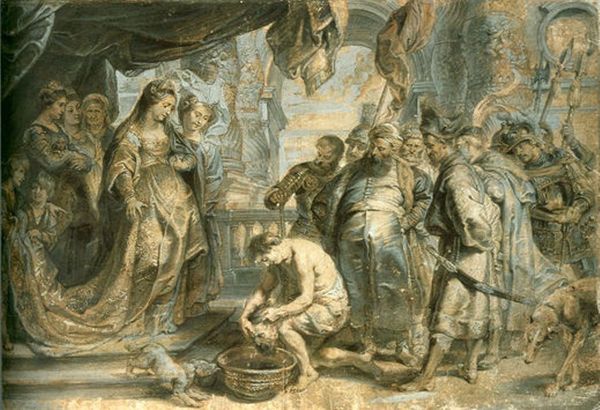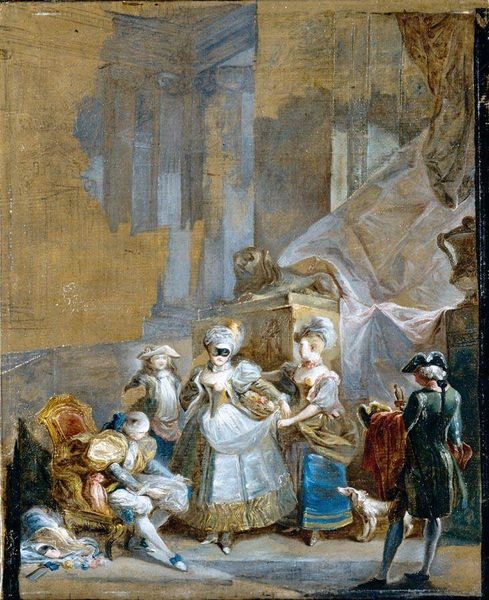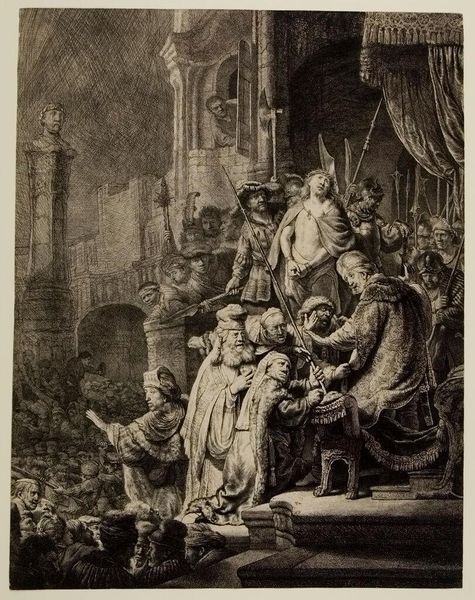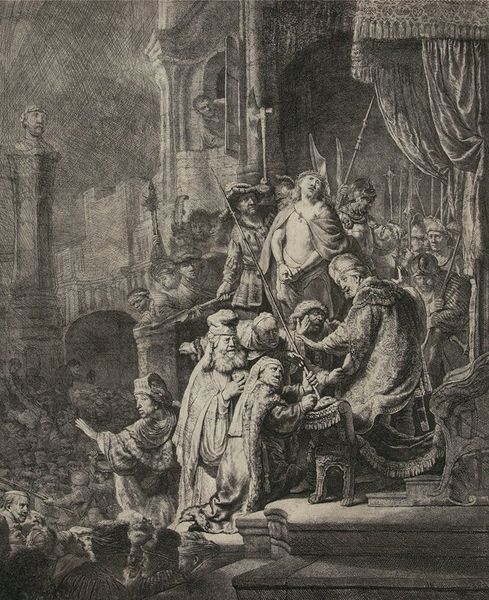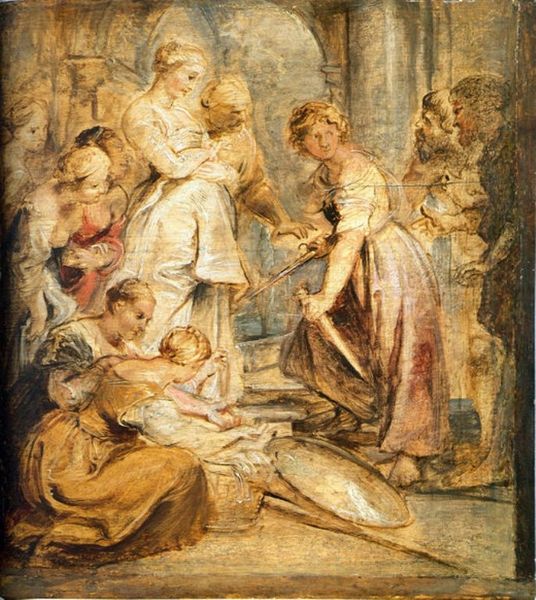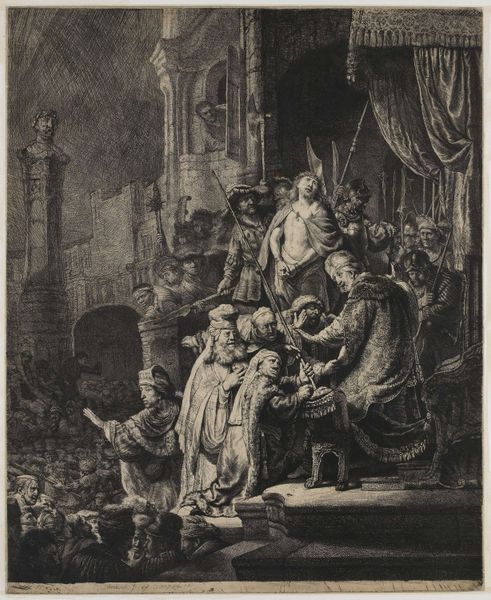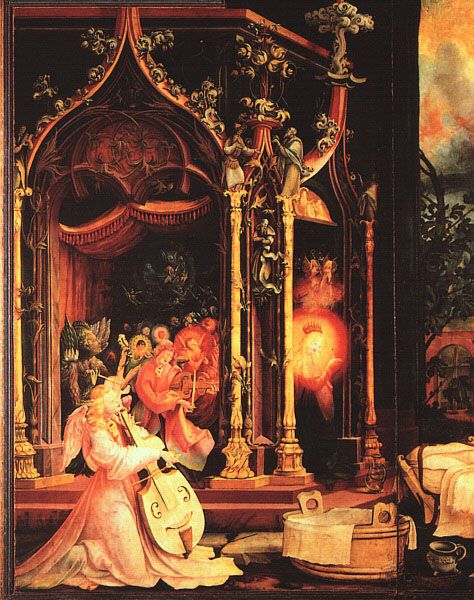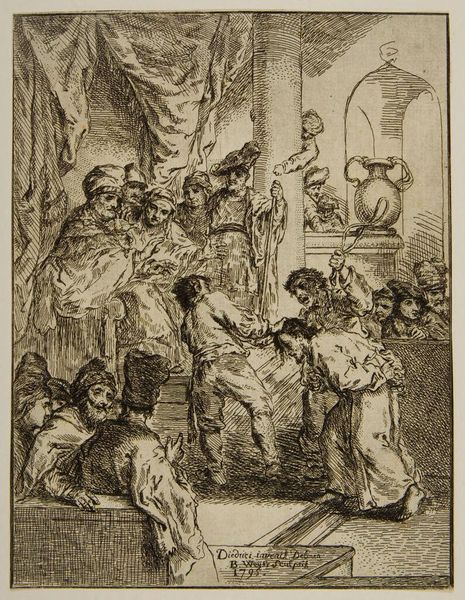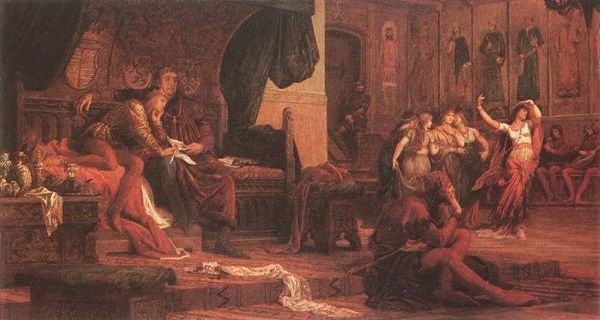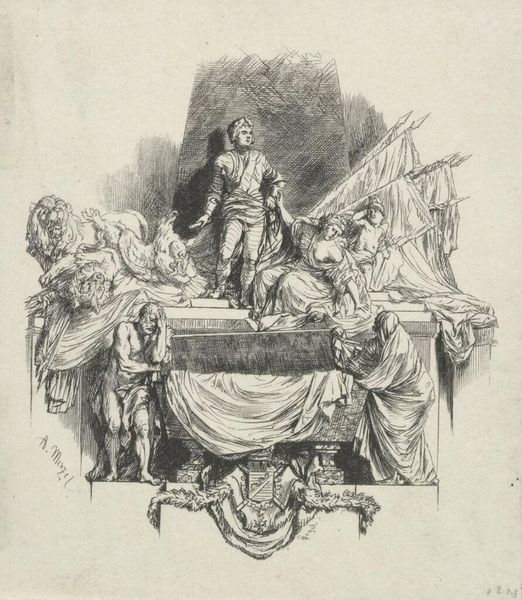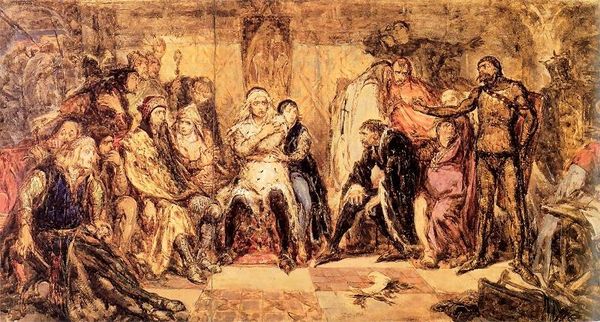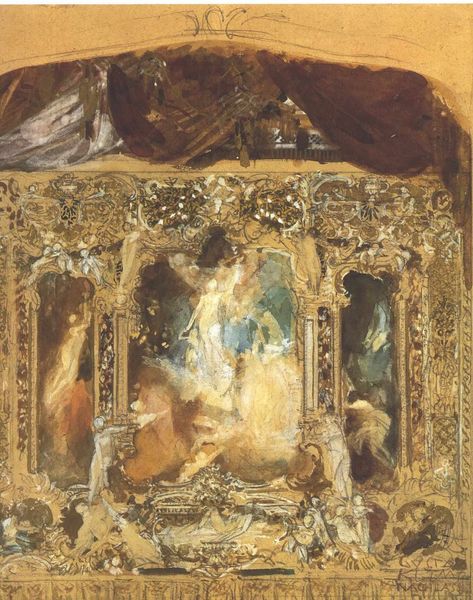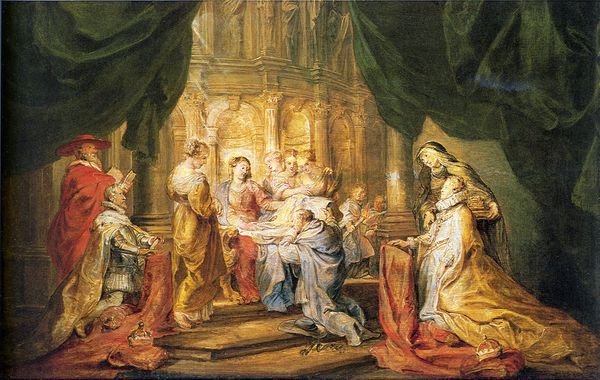
painting, oil-paint
#
narrative-art
#
baroque
#
dutch-golden-age
#
painting
#
oil-paint
#
figuration
#
chiaroscuro
#
history-painting
Dimensions: 55 x 45 cm
Copyright: Public domain
Curator: Looking at Rembrandt van Rijn's “Ecce Homo” from 1634, what strikes you? Editor: Immediately, the overwhelming sense of heaviness, a feeling of somber grandeur, falls across the image. There’s something dense and tactile about the rendering of fabric and flesh. What is the piece made from? Curator: Rembrandt worked with oil paint. This is a powerful moment, Pilate presenting Christ to the crowd, the title a Latin phrase that translates to “Behold the Man.” The entire scene, and the meaning of the moment, hinges on visual recognition of suffering and recognition of fate. Editor: Oil allows Rembrandt to manipulate light in a way that feels very staged; consider the use of chiaroscuro here. The focus isn't only on religious meaning but rather also on a study of textures: see the polished weapons compared to the worn stonework. One begins to think of labor, craftsmanship, class divides... Curator: Indeed, the darkness is powerful. Notice how light seems to emanate specifically from Christ. He's the epicenter of recognition here; it is recognition of innocence betrayed, divine fate. The figures around him press in, almost suffocating him, their faces registering every shade of human cruelty and indifference. Editor: Precisely. Look how Rembrandt layers these observations. It makes you consider the consumption habits of his contemporary audience, too. This wasn't only about spiritual contemplation. It also was a product circulating in a complex socio-economic ecosystem. It shows that art objects contain layers of meanings. Curator: His genius lies in combining immediate and enduring recognition of emotional states within the story’s recognizable elements. We still recognize injustice here. We can imagine the artist saw an immediate relevance, that it struck a powerful chord in his historical moment. Editor: Ultimately, Rembrandt manages to synthesize profound material observations with symbolic drama. Thanks to both, we come to a richer understanding of both. Curator: The visual and historical aspects interweave and provide ongoing perspectives that allow further inspection into an image with ongoing social reverberations. Editor: Very insightful and beautifully said. I find my material perspective brings further depth.
Comments
No comments
Be the first to comment and join the conversation on the ultimate creative platform.
